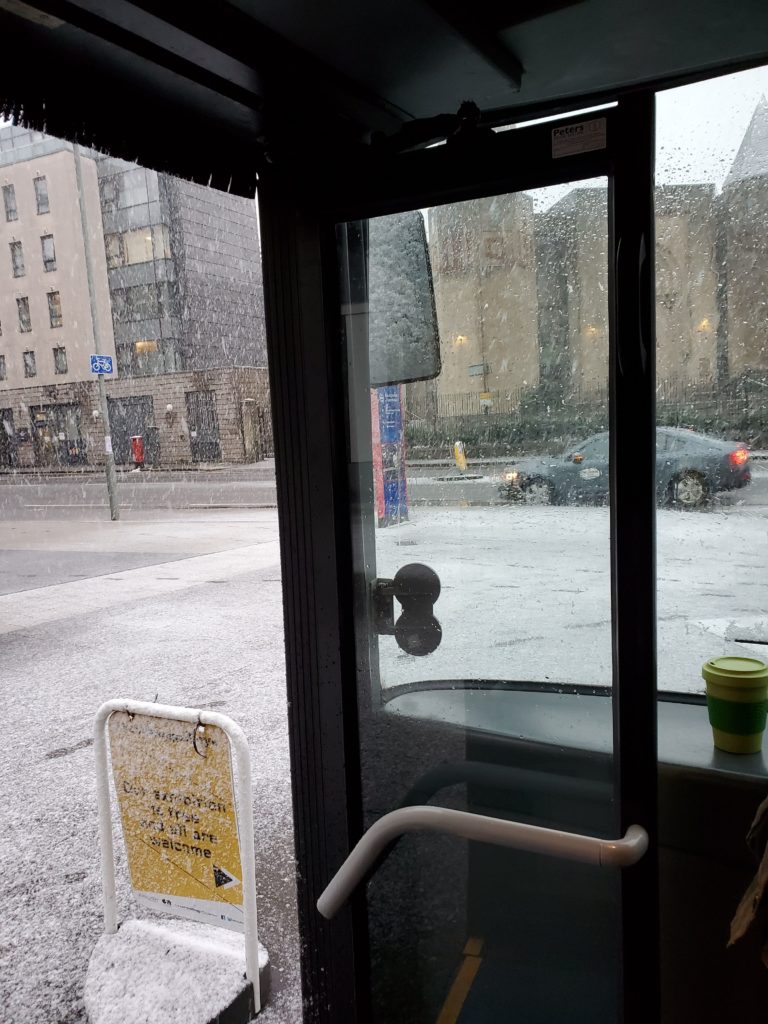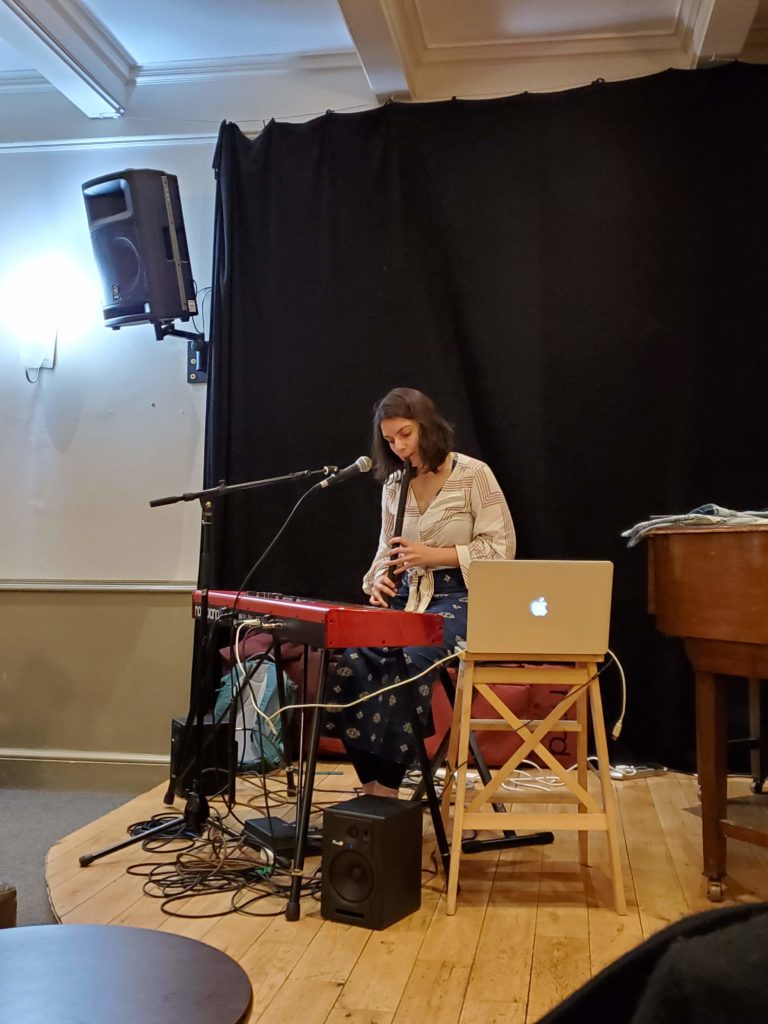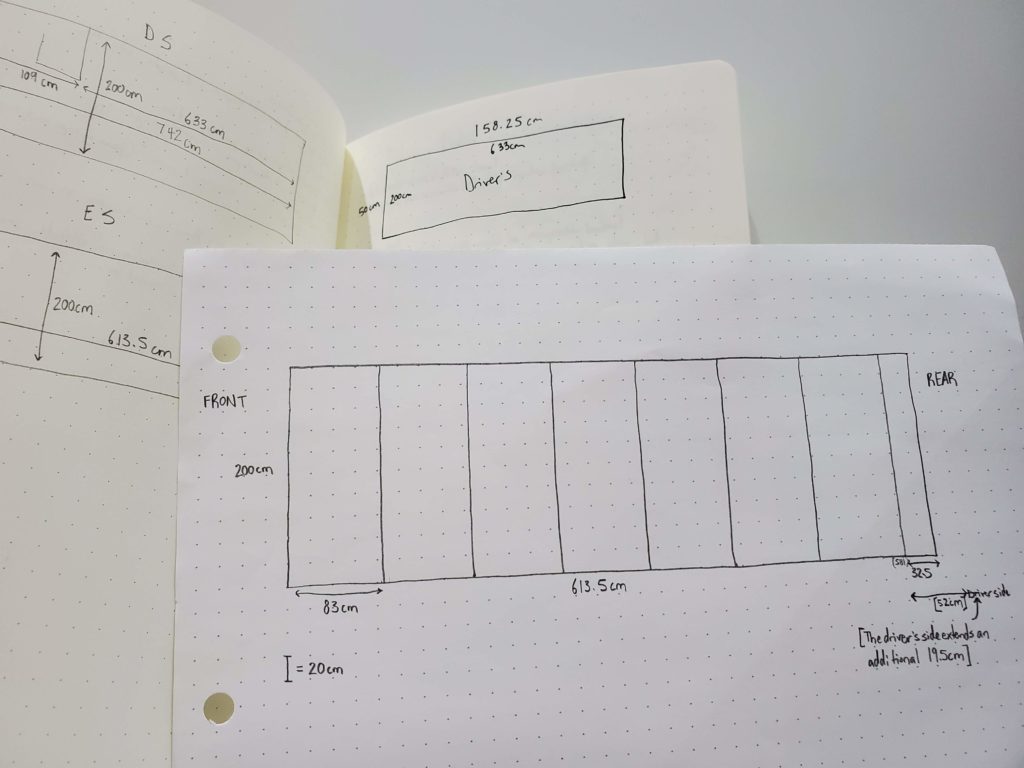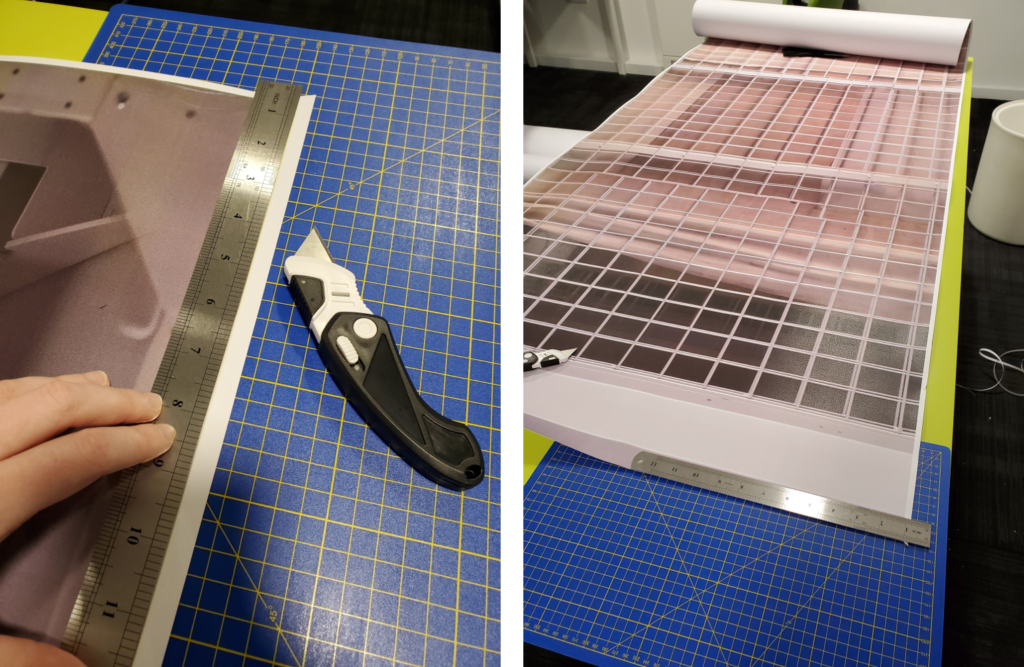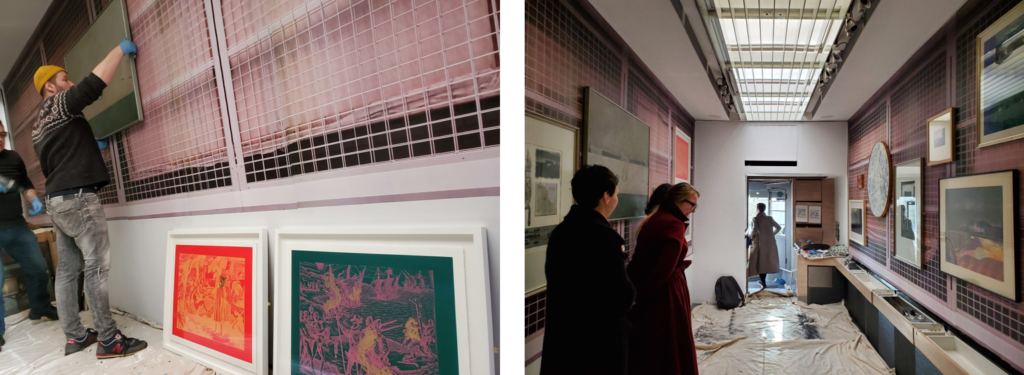The two-week tour felt very successful. Although not all of our venues had large visitor numbers, many of them had more than we anticipated, and we had lovely, positive interactions at each stop.

Apart from the opening event, I had two invigilation shifts: in the afternoon at Drumbrae Library on February 17th, and in the morning at North Edinburgh Arts on February 19th. Drumbrae Library was a particularly quiet venue, with only a few visitors coming in during my shift; North Edinburgh Arts drew a larger crowd, with more people coming in to see the art and chat.
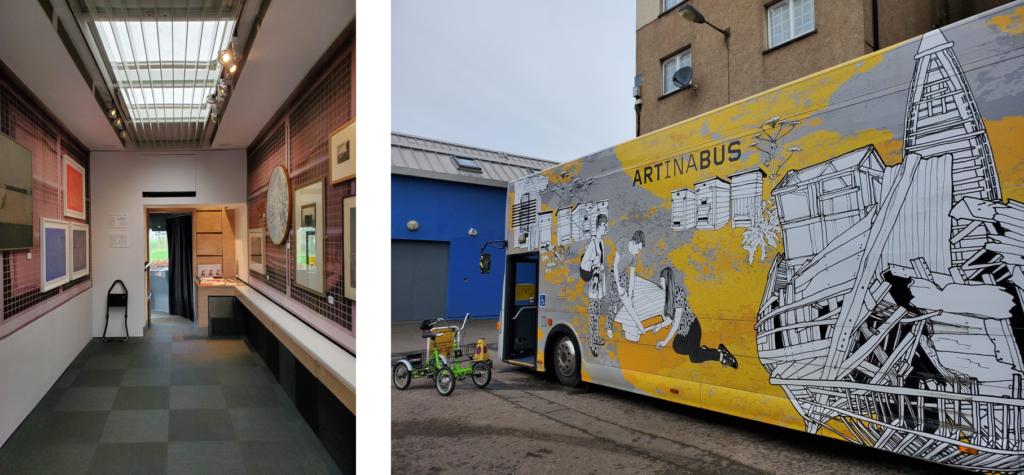
I was personally very proud of the positive response visitors had to the interpretive text. Although not everyone chose to read it, many visitors did pick it up and commented on its value. I think it speaks to the efficacy of our exhibition and curatorial decisions that the exhibition was not dependant on the text and that visitors felt encouraged to freely explore the space and make their own connections with the art—I was particularly taken by one woman who looked closely at the art and then asked if the theme was “light.”
I was also thrilled to see this review in Loaf Magazine. The reviewer notes that “by embracing movement in its display,” the exhibition encouraged an accessible encounter with art for a diverse audience. They also write:
The work that isn’t Scottish in origin or subject feels clear in its relevance, too. The modern, pop art-esque Secreting Myths adds discomforting chromatics to classic colonial portraiture, whilst the minuscule, intoxicating Antediluvian Landscape transports the viewer to a place in the world. Given the movement at the heart of the exhibition and of the facilitators Travelling Gallery, this seems fitting.[1]
I was pleased to read this particular impression of the exhibition, and found it immensely exciting that this underlying theme of movement had been apparent to an external visitor. As discussed in an earlier post, our theme and exhibition had grown out of an initial interest in putting static works of art in motion, and I find it poignant that this interest continued to shine through in our final product.
[Word Count: 359]
Footnote
[1] Rob Bazaral, review of Situated, Loaf Magazine, March 9, 2020, https://www.loafmagazine.com/content/a-gallery-in-a-bus-situated-travelling-gallery.
Bibliography
Bazaral, Rob. Review of Situated, Loaf Magazine, March 9, 2020. https://www.loafmagazine.com/content/a-gallery-in-a-bus-situated-travelling-gallery.
